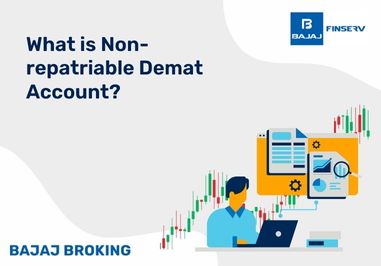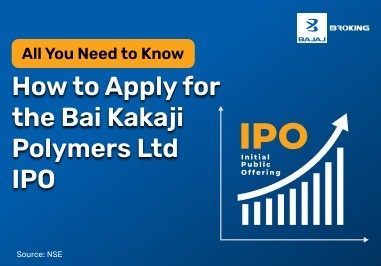What is Trading on Equity?
Trading on equity, or financial leverage is all about using borrowed money to make more money for shareholders.
A business can borrow money by issuing bonds or taking out term loans. Then it uses this money to purchase items that will help it generate more revenue.
The company needs to make more money from its investments than it pays in interest on its debt for this plan to work.
If a company raises debt at an 8% interest cost and invests it in a project generating a 12% return, the 4% excess return accrues to the shareholders, thereby enhancing equity profitability.
Types of Trading on Equity
Companies can use this strategy in two main ways, depending on how much debt they take on compared to their own capital. This is often described as trading on "thin" or "thick" equity.
Trading on Thin Equity
A company is said to be trading on thin equity when its borrowed capital is higher than its own equity capital. This is a more aggressive approach, as the company is relying heavily on debt to fuel its growth. It can lead to higher returns but also comes with much higher risk.
Trading on Thick Equity
This is the opposite. A company is trading on thick equity when its borrowed capital is lower than its own equity capital. This is a more conservative and safer approach, as the company is using less debt and relying more on its own funds.
Effects of Trading on Equity
Trading on equity refers to the use of fixed-cost financial instruments like debt and preference shares to increase the return on equity. It involves leveraging borrowed funds to generate higher returns for equity shareholders. When earnings exceed the cost of debt, the additional profits amplify returns for shareholders. However, if earnings fall, fixed costs can magnify losses.
The effect of trading on equity can be both beneficial and risky. A company with stable income can use debt to boost earnings per share (EPS). But excessive use of debt increases financial risk, especially in volatile markets. The key lies in optimising the capital structure to balance returns and risk efficiently.
Measuring the Effects of Trading on Equity
Since trading on equity can be a complex concept, it is easier to understand with a simple example. Let’s assume that Aster Limited plans to raise ₹4 lakh to finance its expansion project. The company currently has ₹4 lakh in equity capital, with shares valued at ₹10 each. To arrange the required funds, the management is considering four financing strategies:
- Raising the full ₹4 lakh through the issue of new equity shares
- Raising ₹2 lakh via equity and ₹2 lakh via 5% debt
- Raising the entire ₹4 lakh through 6% debt
- Raising ₹2 lakh through equity and the remaining ₹2 lakh via 5% preference shares
The company projects an Earnings Before Interest and Tax (EBIT) of ₹2,40,000 from the proposed expansion. The table below presents how each funding option affects the Earnings Per Share (EPS):
Particulars
| Option 1
| Option 2
| Option 3
| Option 4
|
EBIT
| ₹2,40,000
| ₹2,40,000
| ₹2,40,000
| ₹2,40,000
|
Less: Interest
| Nil
| ₹10,000
| ₹24,000
| Nil
|
EBT
| ₹2,40,000
| ₹2,30,000
| ₹2,16,000
| ₹2,40,000
|
Less: Taxes @ 50%
| ₹1,20,000
| ₹1,15,000
| ₹1,08,000
| ₹1,20,000
|
Earnings After Taxes (EAT)
| ₹1,20,000
| ₹1,15,000
| ₹1,08,000
| ₹1,20,000
|
Less: Dividend to preference shareholders
| Nil
| Nil
| Nil
| ₹10,000
|
Earnings available to shareholders
| ₹1,20,000
| ₹1,15,000
| ₹1,08,000
| ₹1,10,000
|
Number of shares (₹10 each)
| 80,000
| 60,000
| 40,000
| 60,000
|
EPS
| ₹1.50
| ₹1.92
| ₹2.70
| ₹1.83
|
This example highlights how the use of fixed-cost capital, like debt and preference shares, can increase EPS. However, it also raises financial obligations. Therefore, selecting the right capital structure is crucial to ensure a healthy balance between returns and financial risk.
What are the Advantages of Trading on Equity?
A company that uses the trading on equity strategy gets to enjoy a host of different benefits. Here’s a quick overview of some of the key advantages.
Improved Revenues
As you’ve already seen, the primary purpose of the trading on equity strategy is to enable companies to generate more revenue. When executed right, a company can significantly enhance the revenues, profits and ultimately the returns to the investors.
Tax Benefits
Another major advantage of trading on equity is the tax benefit that it offers. The interest cost on borrowed funds is a tax-deductible expense. This effectively means that the company can lower its total taxable income by claiming the interest paid on the borrowed amount as a deduction. This will help lower the amount of taxes that it has to pay to the government.
Prevents Dilution of Ownership
For companies, there are two types of funding options available – equity financing and debt financing. Equity financing involves the issue of equity shares to the public in exchange for funds.
Though this method of financing may be more cost-effective than debt, it will dilute the ownership and control of the company since it will lead to more equity shares in circulation. Debt financing, on the other hand, will not cause any such dilution of ownership. The company will get to retain control over its business operations as it is. This is one of the primary reasons why trading on equity is widely preferred.
What are the Disadvantages of Trading on Equity?
Trading on equity also has a few drawbacks. Let’s take a look at some of the important disadvantages of this financial strategy.
Increase in Financial Burden
With trading on equity, the company has to regularly service the debt by paying interest to the borrowers. If the borrowed amount is high, the interest payouts alone can increase the company’s financial burden significantly. Furthermore, if there’s any unexpected rise in interest rates, the company may have to pay additional interest on its loans.
Bankruptcy
If a company is breaking even or under a slight loss, opting for the trading on equity strategy can end up deepening its losses. Sustained periods of losses may even lead the business toward bankruptcy.
Difference between Trading on Equity and Equity Trading
Basis
| Trading on Equity
| Equity Trading
|
Meaning
| A corporate finance strategy where a company uses debt to enhance returns for shareholders.
| The buying and selling of company shares (equity) in the stock market.
|
Who Performs It
| Company management.
| Investors and traders.
|
Objective
| To increase shareholders’ earnings through leverage.
| To earn profits from price changes in stocks.
|
Nature
| Internal financial decision within a company.
| External market activity.
|
Focus
| Optimising capital structure using debt.
| Trading shares for investment or profit.
|
Example
| A company raises debt to expand operations and increase returns.
| An investor buys and sells Tata Motors shares for a profit.
|
Conclusion
With this, you must now be well-versed in the meaning of trading on equity. Many Indian companies routinely use this strategy as a means to enhance their revenue and profitability. However, it is a double-edged sword and can also lead to deep losses if the company fails to generate more revenue than the overall cost of borrowing.














